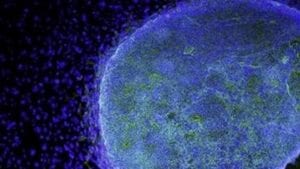 Testicular Tissue Producing Insulin – A Cure: Studies show that men who have type 1 diabetes might be able to grow their own insulin-producing cells from their testicular tissue. This new discovery comes from researchers at the Georgetown University Medical Center.
Testicular Tissue Producing Insulin – A Cure: Studies show that men who have type 1 diabetes might be able to grow their own insulin-producing cells from their testicular tissue. This new discovery comes from researchers at the Georgetown University Medical Center.
There are more than 23 million people in the United States alone, who have been diagnosed with diabetes. That 23 million includes women, men, and children. On a yearly basis, another million will be diagnosed with diabetes as well. It is growing epidemic and many people who do not have a family history of diabetes are being diagnosed with it as well. Both laboratory and animal studies are held every day in hopes of finding a new cure for diabetes and sometimes there are great advances.
The newest advance comes from the researchers at the Georgetown University Medical Center where researchers have proven through studies that human spermatogonial stem cells also known as SSC’s, which are extracted from testicular tissue, can alter into insulin-producing beta islet cells, which are normally found in the pancreas. The researchers, who discovered this, say that this study has been accomplished without the use of extra genes, which are used by most labs today to turn adult stem cells into a tissue of choice.
Through years of study, there have been some great discoveries made in the world of health science and diabetes. Even mice have been cured of their diabetes through the use of induced pluripotent stem cells also known as IPS cells, but some of these studies have also had their drawbacks as well. Through certain studies, islet cells have been transplanted from deceased donors, but soon rejections and a lack of deceased donation became an issue, leading to an unsuccessful study. Adult stem cells have also been re-programmed with other genes so that they behave just like embryonic stem cells, however this study led to transfected tissue, teratomas and tumors.
Researchers quickly turned to SSC’s rather than ISP’s for their research. SSC’s already have the source that is needed in stem cells; therefore they need no further coaxing that could lead to future health issues. Dr. Ian Gallicano, an associate professor in the Department of Cell Biology and Director of the Transgenic Core Facility at Georgetown University stated in a meeting, “We found that once you take these cells out of the testes niche, they get confused, and will form all three germ layers within several weeks. These are true, pluripotent stem cells.”
This is how it works:
One gram of tissue is extracted from the human testicle, from this one million stem cells were produced, which showed many biological indicators that illustrated normal beta islet cells. These cells were transplanted back into the immune deficient diabetic mice. A week later, there was a decrease in glucose levels.
The results lasted only a week, but through extensive studies, researchers believe that they are on the right track to producing a cure for type 1 diabetes.
The lead investigator, Gallicano also stated in his meeting, “No stem cells, adult or embryonic, have been induced to secrete enough insulin yet to cure diabetes in humans, but we know SSCs have the potential to do what we want them to do, and we know how to improve their yield.”